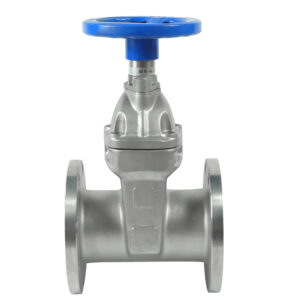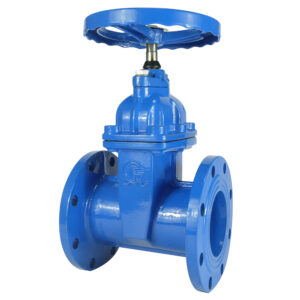Gate valves are commonly used in various industries for controlling the flow of fluids. One key differentiation in gate valve design is the type of stem used, which can be categorized into rising stem and non-rising stem. In this discussion, we will explore the similarities and differences between the two types, focusing on their construction, operation, advantages, and applications.
Rising stem gate valve
A gate valve with a visible stem, also known as a rising stem, has a stem that extends above the valve body when the valve is open. This design allows for a clear visual indication of the valve position, making it easier to determine whether the valve is fully open or closed.
Construction
The rising stem design consists of a threaded stem that is attached to the gate. As the valve is operated, the stem rises or lowers, moving the gate up or down to control the flow of the medium.
Operation
To open the valve, the stem is rotated in a counter-clockwise direction, causing it to rise and lift the gate. Conversely, rotating the stem clockwise lowers the gate, closing the valve. The vertical movement of the stem provides a direct visual indication of the valve’s position.
Advantages
The main advantage of a rising stem gate valve is its clear visual indication of the valve position. This feature is particularly useful during maintenance and troubleshooting, as it allows operators to quickly identify the status of the valve without the need for additional instruments or measurements. Additionally, the rising stem design enables easy manual operation and provides a mechanical advantage in case the valve becomes difficult to operate due to factors such as pressure or temperature.
Applications
Rising stem gate valves are commonly used in applications where visual confirmation of the valve position is critical, such as in fire protection systems, water treatment plants, and general industrial processes.
Non-Rising Stem gate valve
In contrast, a gate valve with a non-rising stem, also referred to as a hidden stem or concealed stem, does not extend above the valve body when the valve is operated. The stem remains inside the valve, hidden from view.
Construction
Non-rising stem gate valves typically have a threaded stem that is connected directly to the gate, eliminating the need for a rising stem.
Operation
Similar to rising stem gate valves, rotating the stem counter-clockwise opens the valve by raising the gate, while clockwise rotation closes the valve by lowering the gate. However, the stem does not visibly rise or descend during operation.
Advantages
The non-rising stem design offers advantages in situations where space is limited or where the valve is installed in areas with restricted access. Since the stem does not extend externally, it requires less vertical clearance, making it suitable for installations in tight spaces. This design also reduces the risk of damage to the stem caused by external factors or accidental interference.
Applications
Non-rising stem gate valves are commonly used in underground piping systems, buried installations, and applications where space constraints or aesthetic considerations are important.
In conclusion, the choice between a rising stem and a non-rising stem gate valve depends on the specific requirements of the application. The rising stem design provides a clear visual indication of the valve position and is suitable for applications where visual confirmation is essential. On the other hand, the non-rising stem design offers advantages in terms of space-saving and protection against external damage. By understanding the differences between these two types of gate valves, engineers and users can make informed decisions when selecting the appropriate valve for their specific needs.





